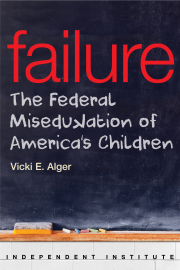President Obama unveiled his latest college affordability plan in time for the start of the new school year. Yet his proposal for a government-issued “College Scorecard” shows he needs more homework about why college is so expensive.
Under the president’s plan, starting in 2015, colleges would be rated according to their “value,” measured by tuition prices, the proportion of low-income students enrolled, graduation rates, debt loads carried by graduates, the advanced degrees they attain, and graduates’ earnings. By 2018, federal aid would be dispersed to institutions based on their ratings.
The president has suggested that giving people more information is a surefire way to drive college costs down. But bad incentives, not bad information, are to blame.
Colleges have raised tuition prices and let costs run amok for decades — all the while directing more of their own institutional aid to students from wealthier families. Still the federal aid just kept coming.
Nearly a decade ago, less than one quarter of the institutional aid colleges awarded went to undergraduates from families earning $100,000 or more. Today, it’s jumped to 38 percent.
If colleges had instead used financial aid to improve affordability, a college degree would cost about $3,500 less, according to the Center for College Affordability and Productivity.
Instead, colleges seem to be pouring more money into administrative bloat. In fact, administrative staff grew at twice the pace of instructional staff over the past 15 years, according to research by the University of Arkansas’ Jay P. Greene.
This situation will likely worsen if new mandates are enacted under Obama’s college rating system, since additional federal financial aid compliance officers will be required to track students long after they’ve graduated.
Americans should learn from our experience with No Child Left Behind, which added nearly 8 million additional administrative hours at a cost of more than $235 million annually to K-12 education. Colleges will face similar additional red tape under Obama’s College Scorecard scheme.
Obama’s rating system will also open a Pandora’s box of unintended consequences because his measures of college “value” are based on economically faulty assumptions that are also highly susceptible to politicization.
Just wait until Washington politicians and their special interest friends start dictating what makes a college education valuable. Programs offering low-earning liberal arts and social work degrees could face the chopping block, along with higher earning but less esteemed programs among Washington elites such as manufacturing and trades.
There are better ways to tackle college affordability. First, this is largely a problem of the federal government’s own making. For decades, federal aid has flowed to institutions, which in turn raised prices with immunity — making college less, not more, affordable.
The solution is to phase out federal aid, return the associated overhead and administrative funds to taxpayers, allow students and their families set aside tax-free funds to pay for college, and encourage private sector work-study contracts so students can earn degrees without the debt or job uncertainty current graduates face.
Now that’s a plan that would earn high marks for innovation and effectiveness, but Americans should also consider a more fundamental re-evaluation of the college conversation.
Obama insists that a college degree is “an economic imperative.” In reality, just one out of four jobs in the fastest growing fields over the next decade will require a college degree or higher.
All students should have an equal opportunity to pursue the education they believe will best prepare them to succeed personally and professionally. That freedom is what fuels our economy, not the “four-year college for all” agenda, which too often leaves students in debt for a meaningless degree.








